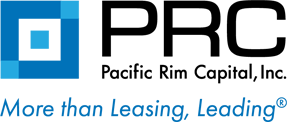When working to develop the terms of a lease for material handling equipment, one of the factors you must consider is the economic useful life of the asset.
This metric is important to determine the terms of any finance agreement for any piece of equipment. No matter who you select as a financier—be it a vendor, a broker, a bank, or an independent lessor— all will consider this metric to evaluate the financial terms of the agreement. But what is this metric, why is it important, and how does it impact leasing terms?
What is Economic Useful Life?
Economic useful life is a metric that helps answer questions like, “How long will this equipment be used for?” or “When does it stop making sense to continue to use the equipment?” Simply put, economic useful life calculates how well your equipment will maintain its effectiveness during the time you are leasing it. Economic useful life is not a one-size-fits-all evaluation. There are many factors such as the application of the equipment, the environment, and the type of asset.
As you use the product more, the more maintenance it will need. For example, think of a car – if your car has 100,000 miles on it, you would consider the maintenance worth the cost because the car is still viable. However, if your car has 200,000 miles on it, you might consider the costs of maintenance to be too much compared to what the car is worth.
In this case, you may be better off putting the funds towards a new car than continuing to repair the old one. The same concept applies to your equipment lease. As the use of the equipment continues, there comes a point where the maintenance costs exceed the value of the equipment.
At this point, a lessee must consider when it makes sense to continue performing maintenance on a piece of equipment as opposed to just purchasing or leasing new equipment. When the costs of maintenance outweigh the costs of the new lease or purchase, you have reached the end of the equipment’s economic useful life.
How Is Economic Useful Life Calculated?
While the concept of economic useful life is straight-forward, the calculation varies greatly depending on a number of factors. Each type of equipment is different and each company who uses the equipment is unique.
Because of this, there is not one simple equation to calculate the economic useful life of your leased equipment. It depends on the equipment and the application of the equipment and could vary from one lease to the next.
To truly determine the economic useful life of your asset, you need to be aware of factors specific to your business that will impact this. Factors can include managing your asset well throughout the course of your lease and optimizing your asset to get the most out of it while in use.
If you decide to obtain a lease through a broker or bank, they will typically not be concerned with the actual management of your assets. They are interested in your money not in your business.
However, Pacific Rim Capital, Inc. will work with you throughout the entirety of your lease to ensure you maximize the useful life of your asset while helping you to maintain a lease that will keep your total cost of ownership low.
Conclusion:
Economic useful life is an important metric that is used when financiers are developing the terms of the lease for your asset. Understanding how economic useful life works and how it is calculated can play a decisive role in what type of company you choose to finance your lease. Every company measures economic useful life differently.
A company with experience will know that a variety of factors determine the economic useful life of each individual asset. An experienced lessor will be able to identify and provide lease terms that reflect your unique business. By choosing to work with an independent lessor like Pacific Rim Capital, Inc. you will be involved with a company that provides reasonable rates and excellent service to help you focus on your core business.

